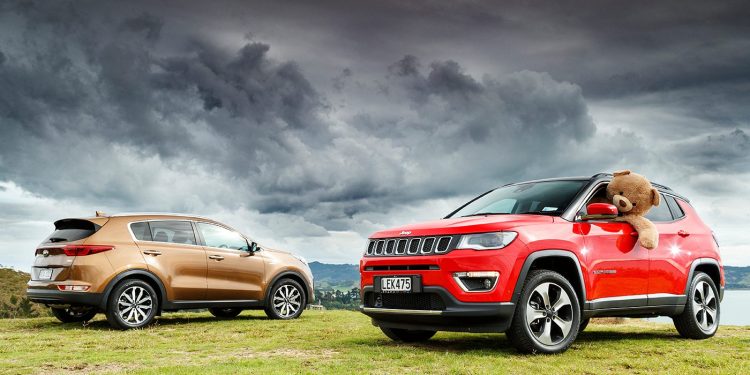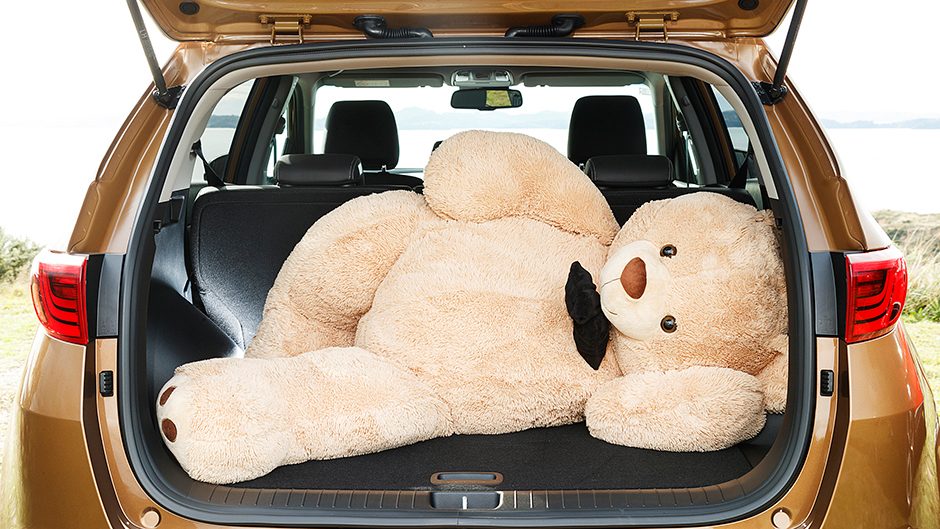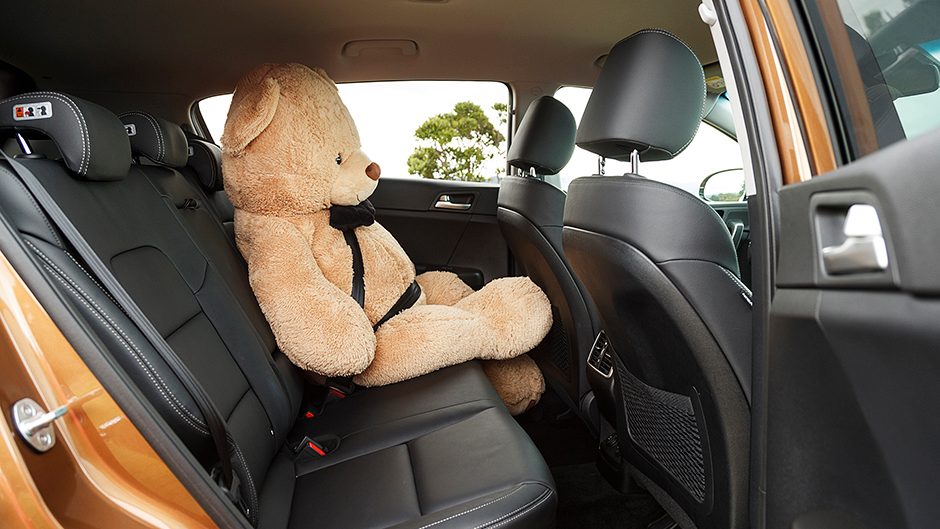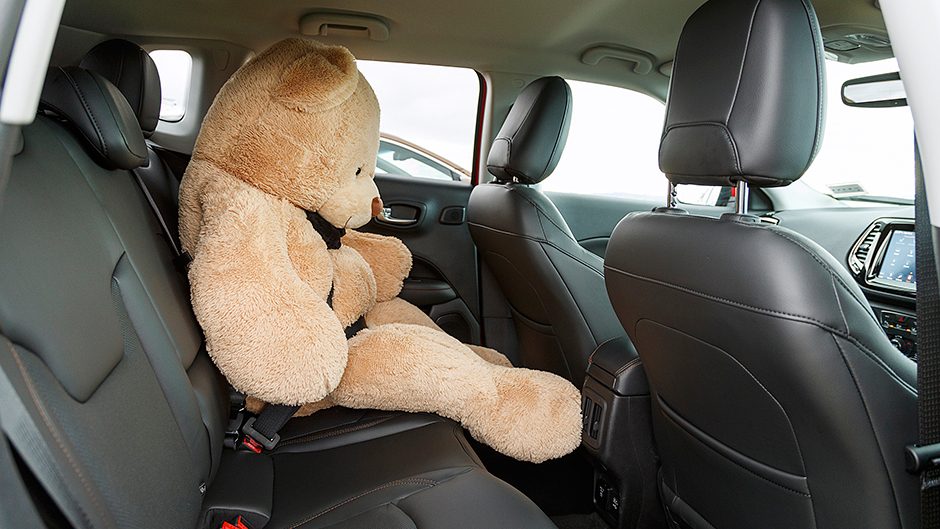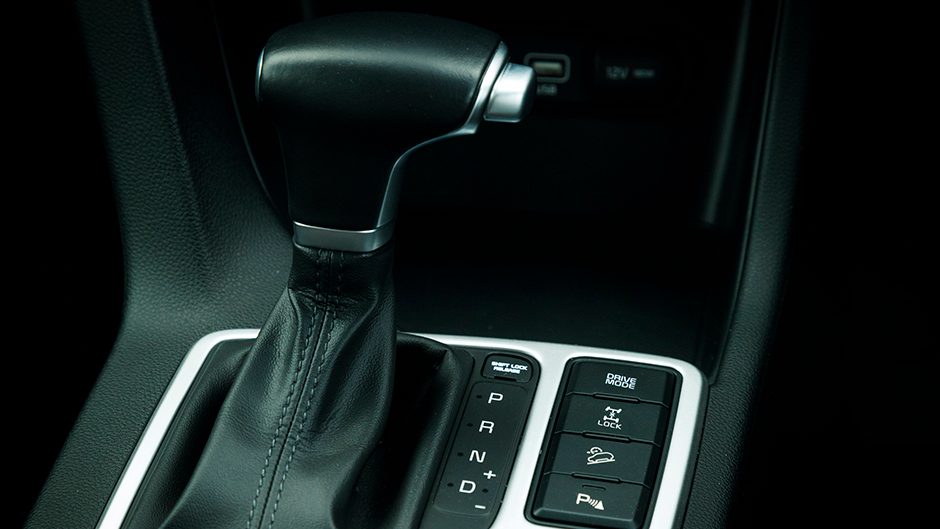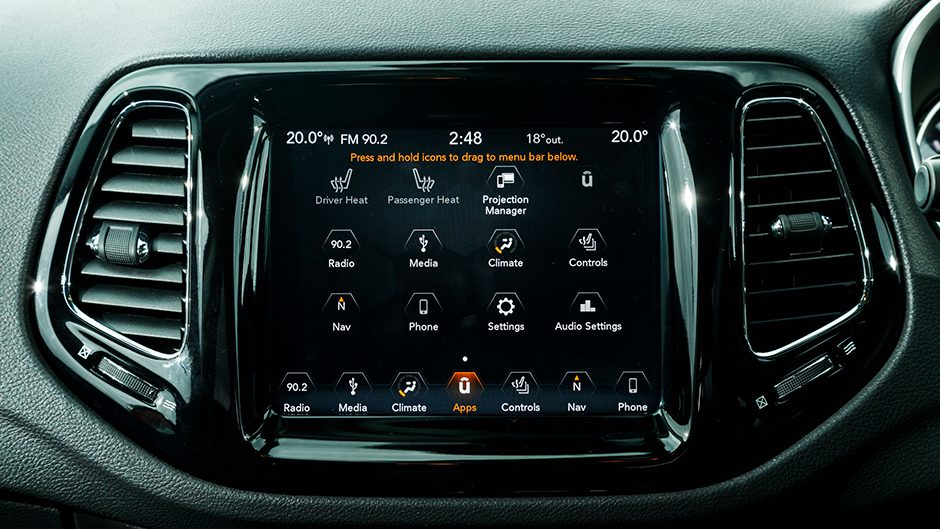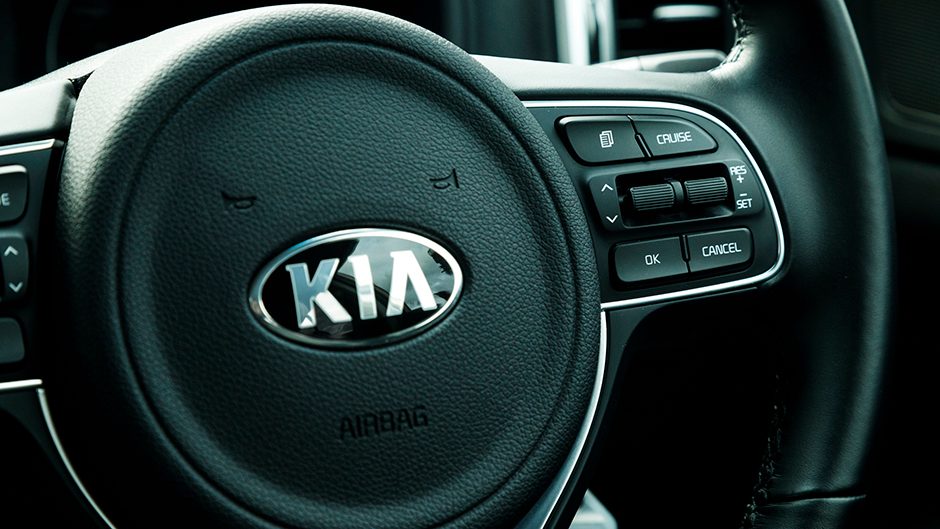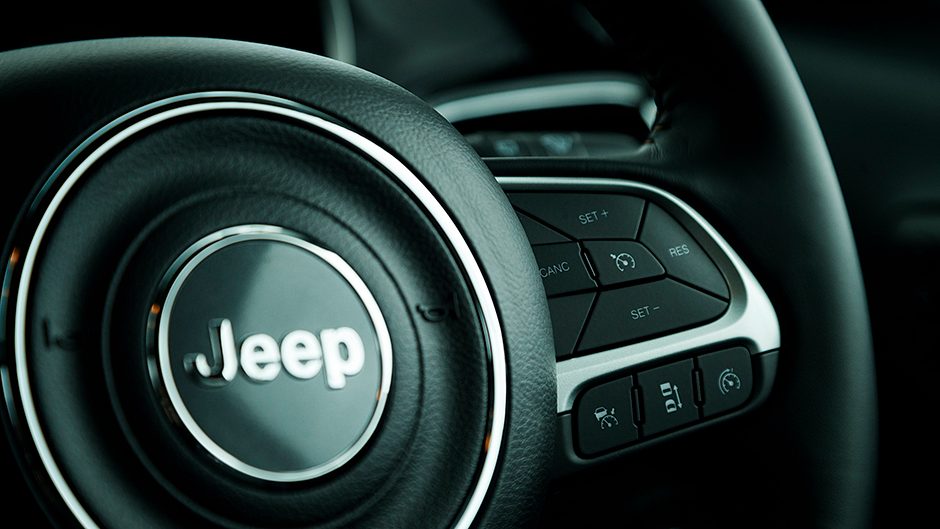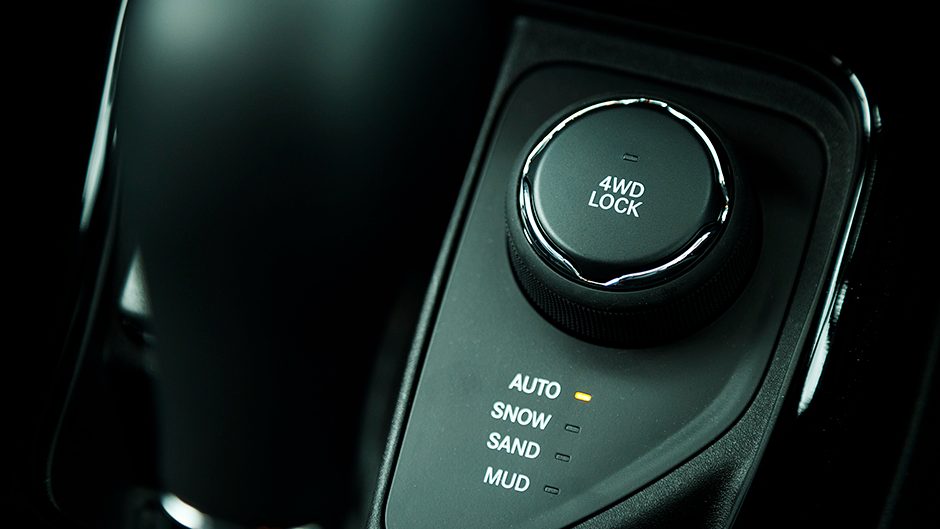2018 Kia Sportage Limited vs Jeep Compass Limited comparison
Word Kyle Cassidy | Photos Tom Gasnier
Jeep’s finally got a new player in one of the country’s most popular segments. The Compass is expected to become the firm’s best seller here, and so we pit it against another sales star, the Kia Sportage.
With a market ga-ga for SUVs, Jeep is in a prime position to reap the benefits with its high-riding line-up. The company clicked over just 1200 sales in 2017, with the Grand Cherokee responsible for roughly half of those. The rest consisted of contributions from trusty Wrangler, and the cheaper Cherokee and Renegade.
The latter pair dwell in segments going bananas so should do better but both are pricey with polarising designs. The Cherokee has been reworked with a revised front end which will help boost its sales potential when it lands later in the year but it’s the arrival of the new Compass that will see the Jeep sales people busier than they have been in a while. For it lobs into a popular market space and is a smart looker with price points that are much more competitive with potential rivals.
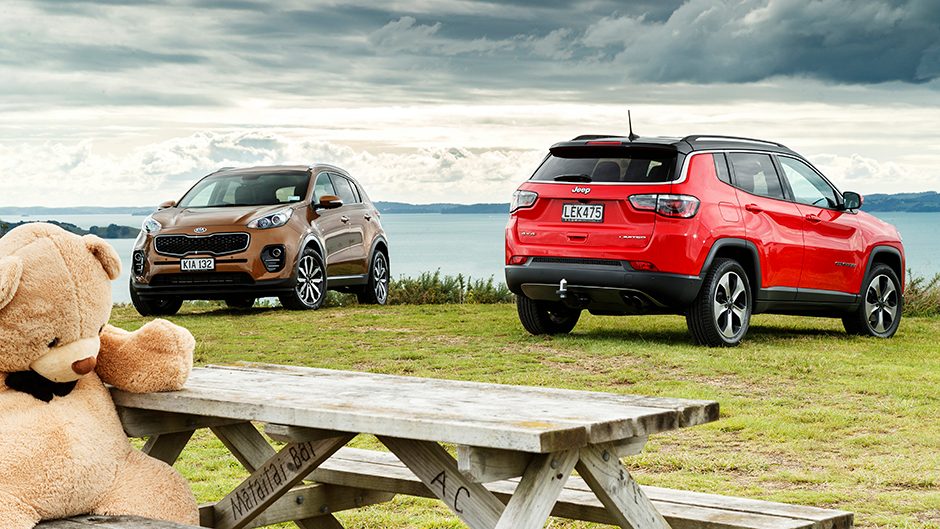
An SUV similar in size, concept and price is the hot-selling Kia Sportage. It’s popular here, with Kia moving 3500 of them last year. Admittedly two thirds of those were the 2WD models, and Jeep expects the $36,990 front-drive Longitude variant to be its best seller here too. But the Longitude models haven’t yet arrived in NZ so here we have the Compass Limited with a comparative Sportage along to see how it measures up.
Compass reset
You may remember the Compass of old. It had a partner called the Patriot that was the same mechanically yet wore different sheet metal. We still can’t see the logic in that product planning but now the Patriot is but a memory. And we have a new Compass instead which uses a mix of US- and Euro-sourced components from the big Fiat Chrysler mash-up.
Like the Renegade, it’s based on FCA’s “small wide architecture”, which dates quite a way back to a tie-up between Fiat and GM. There are struts all around, the rears utilising a trailing arm and dual lower link set-up which looks a little rudimentary in 2018, but it works well enough in conjunction with Koni dampers.
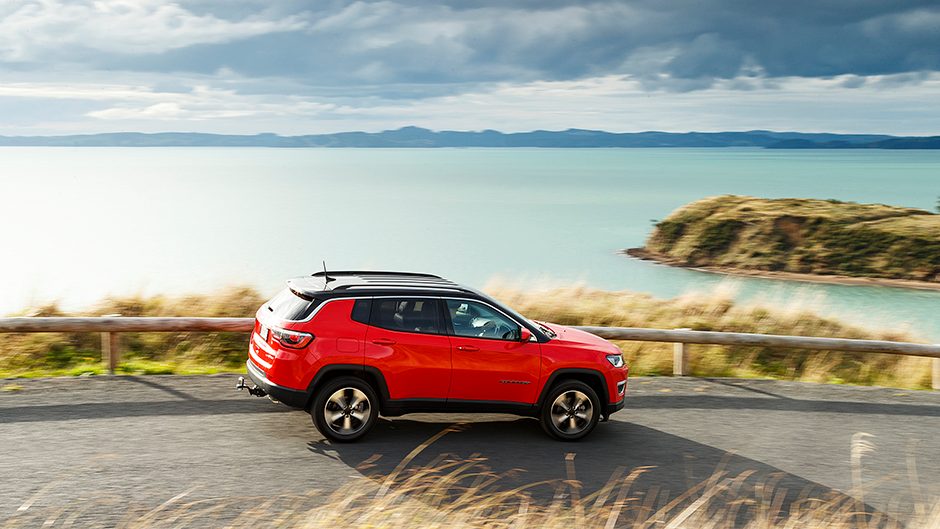
The Limited model features ‘Jeep Active Drive’ which they call a full-time 4×4 system, that is unless the rear power take off unit has decoupled the rear axle…but it’s said to be able to redirect 100 per cent of the drive torque to any one wheel if the slippery situation you find yourself in requires it.
There’s a traction control system to prime the set-up for the terrain being conquered with Snow, Sand and Mud modes, as well as the Auto setting. The ‘off-road’ Trailhawk model gets a version with a low ratio setting for rock crawling shenanigans. All 4×4 Compass models are powered by Jeep’s 2.4-litre four, enhanced by the inclusion of Fiat’s electro-hydraulic variable valve timing. It makes 129kW and 229Nm of torque and on 4×4 models it’s mated to the nine-speed auto. The front driver uses the same 2.4 but is matched to a six-speeder.
Jeep says the Compass is ‘expressive and emotional, with a premium, sculptural design aesthetic, a wide stance and exceptional glass-to-wheel proportions’. To us it looks like they shrunk a Grand Cherokee, and to good effect. It certainly looks an order of magnitude better than the last one and retains all the characteristic cues of a Jeep.
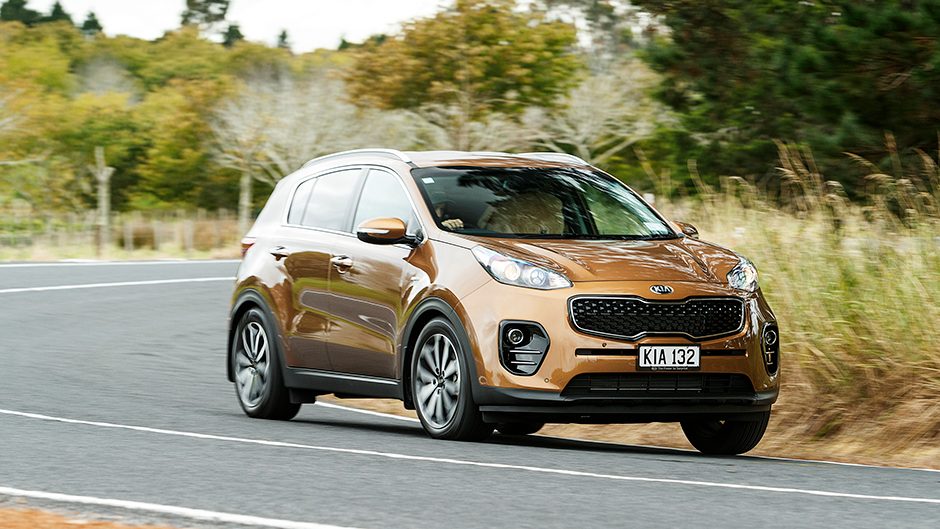
The Sportage uses a similar mechanical set-up to the Compass with a 2.4-litre direct-injection petrol making 135kW and 237Nm, running through a six-speed auto. AWD is delivered via an on-demand system which can be locked into a 4×4 mode with a 50/50 torque split at speeds below 50km/h. Like Compass, Sportage is 4.4m long, offers seating for four, five at a squeeze, and retails for $45,990 in Limited guise, $1000 less than Jeep is currently charging for its Limited.
Kia spotters will have noticed we have an EX on test, but that’s all we could get our hands for this match-up, but the difference between the EX AWD and Limited is purely specification.
On the go
While these two are armed with all-wheel drive and a few buttons to help owners conquer the wilds, many buyers are happy enough with the front-wheel drive models. However there is an advantage having all wheels driven on wet roads and loose surfaces, even if the fronts do most of the work most of the time. Both the Kia and Jeep move off the mark smartly so feel quick enough around town, yet both require the best part of 10sec to hit the legal limit. Tearaways they aren’t but their 2.4-litre fours have sufficient midrange pull to get by on while they get rowdier as revs rise above 4000rpm.
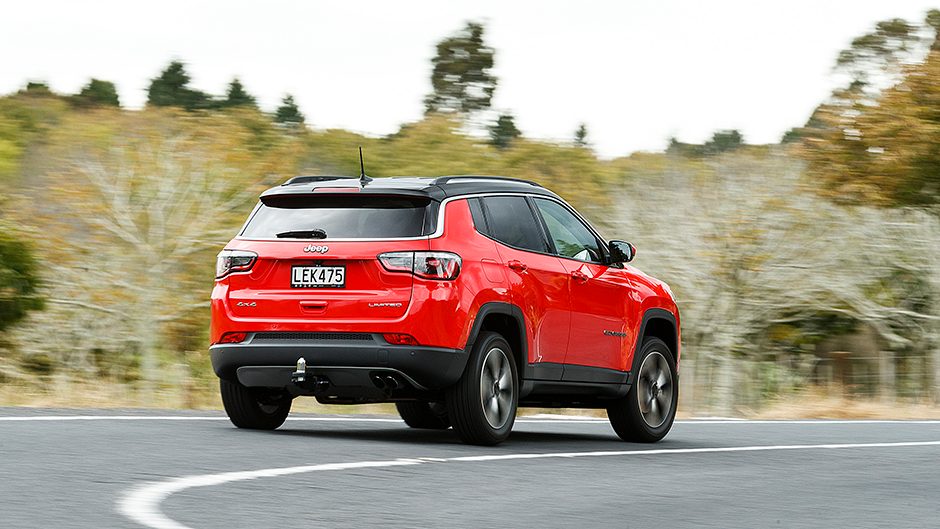
The Jeep may have nine ratios in its gearbox but often is in fourth or fifth in urban trawling, which is similar to the Kia, while it rarely hooks into ninth, so its numerical gear superiority isn’t all that much of an advantage. Both autos shift smoothly and quickly when pressed with little requirement to mess about with the manual sequential shifter.
Like the performance numbers, consumption habits are similar, both averaging around the 10 to 11L/100km mark, the Jeep being closer to its claimed figure, that being 9.7L/100km while Kia reckons the Sportage can average 8.5. There’s nothing too discernible between their gaits, both riding well but each can get a tad noisy on coarse chip roads as speeds rise. The Kia has a slightly nippier turning circle, the Jeep better all around vision.
The Kia is keener on a few curves, turning more quickly and securely. The Jeep is better at soaking up the bigger bumps, however, most taken in its stride, and while it grips assuredly, there is more roll to contend with and so the understeer develops sooner. For a Jeep this doesn’t feel overly burdened with mass but the Kia is better balanced and controlled. The Sportage has superior steering, the Jeep’s helm being less precise and likely to transfer the rattles through bump-strewn corners.
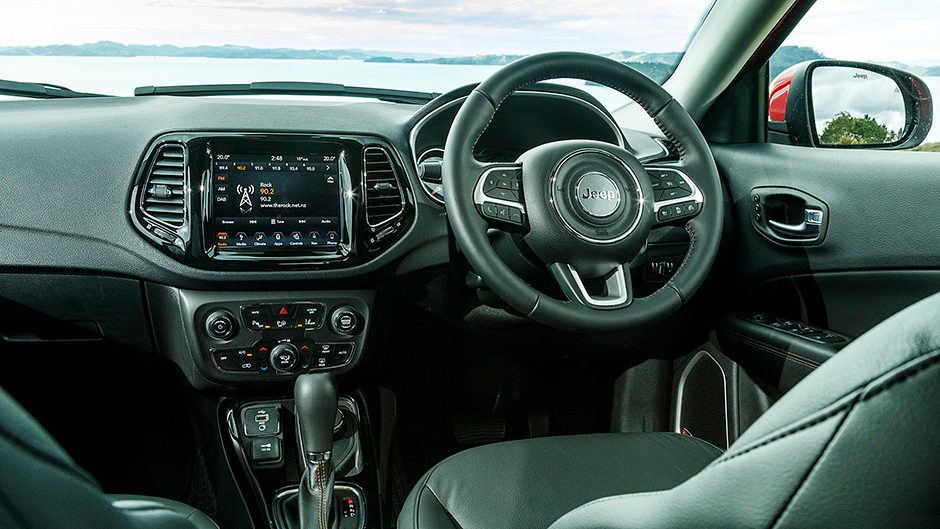
Practically speaking
Jeep cabins used to be decidedly average but the new Compass, while not quite a class revelation, is at least up to snuff. Most of the plastic surfaces are soft and there are a few glossy black bits to add some spruce while the screens lend a techy vibe.
Some might like the chunky Jeep steering wheel but we preferred the Kia’s slimmer rim, while the Compass has three cruise buttons, one each for the limiter, conventional cruise and another for the adaptive cruise, which seems overly complex. Most bits in the Jeep interior are sound save for the Fiat-sourced wands, while there’s a comprehensive trip computer, and lots of stuff to fiddle with via the infotainment touchscreen.
The Kia’s interior suffers from screen envy, the Jeep’s touchscreen being bigger and more replete with functions and resolution. But the Sportage’s cabin is well finished with a mix of hard and soft plastics and we’ll call the design simple but cohesive. Most should be able to find a suitable driving position, the Kia’s seat having more form to it. Each has useful storage solutions for life’s bits, including a hidey hole under the front seat squab in the Jeep.
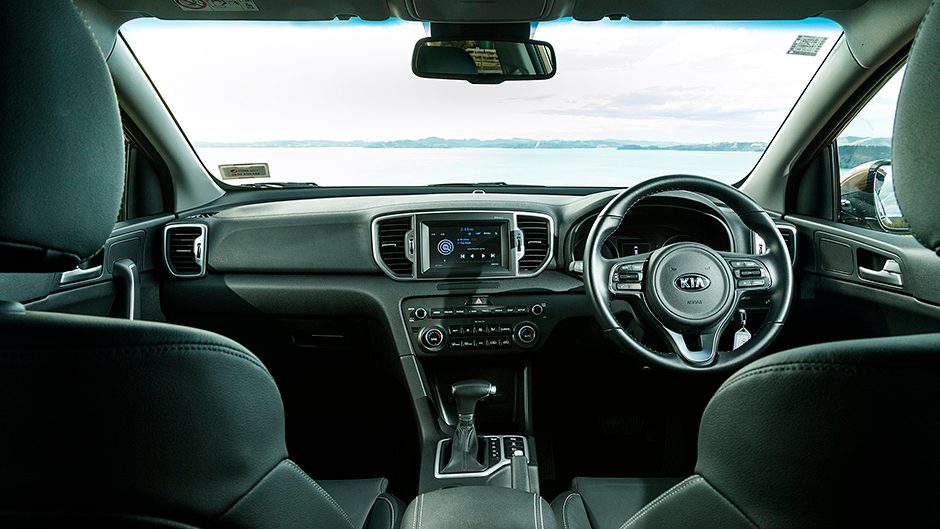
You’ll get more stuff in the boot of the Kia, it being wider and longer, while the Jeep’s ultimate boot capacity is hindered by the powered tailgate mechanism and the subwoofer. And trying to remove the cargo blind can be vexing if you don’t know how (you have to drop the back seats to wriggle it free).
Both get a full-sized spare, but neither has those handy release levers for split folding the back seat. However, both do fold easily enough with one lever or handle to pull on the seat. It’s a more comfortable space in the rear of the Kia with a little more room and a recline on the seat back while the Jeep’s is just too upright.
More to contemplate
Other things to consider include the Jeep’s off road traction system and added ground clearance (212 vs 172mm) that will probably see it venture a little further off trail, but for towing the Kia is rated at 1500kg braked, 500 more than the Compass. Both warranties cover each vehicle for 100,000km, though the Kia’s is valid for five years to the Jeep’s three.
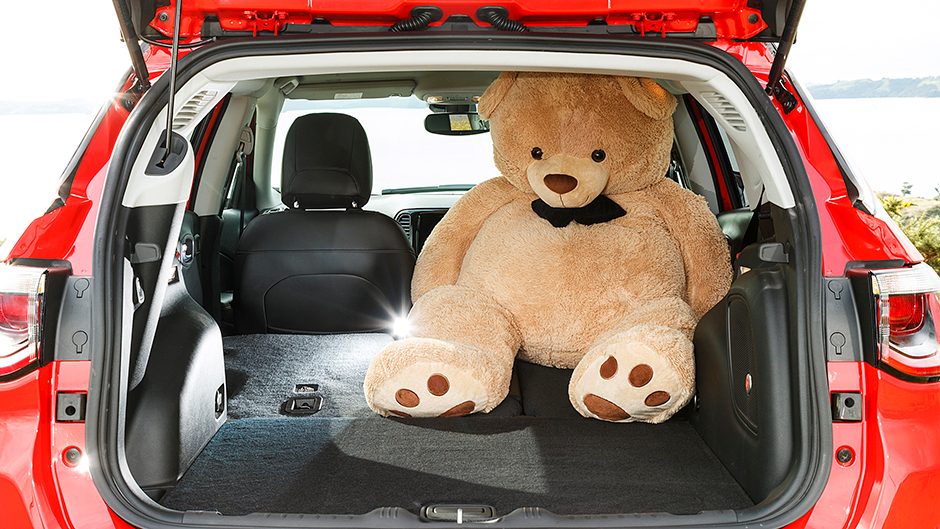
Comparing the spec list of each Limited model, the Jeep has a few more items. Both have active safety features including AEB, though the Kia lacks active cruise while the Jeep’s system includes the handy stop and go feature for traffic. You’ll enjoy the convenience of powered tailgates, smart keys, Android Auto and CarPlay, sat nav, electric park brakes, leather trim and electric seat adjust and front and rear sensors with a backing camera. In the Jeep you’ll find extras like the Beats audio, a larger touchscreen display and a self parking function.
However that’s not quite enough to edge the Sportage here, which is the preferable drive with more interior space and comfort. But if you don’t like the look or the fact there are so many of them about, the Compass is now more worthy of consideration than it has ever been.


